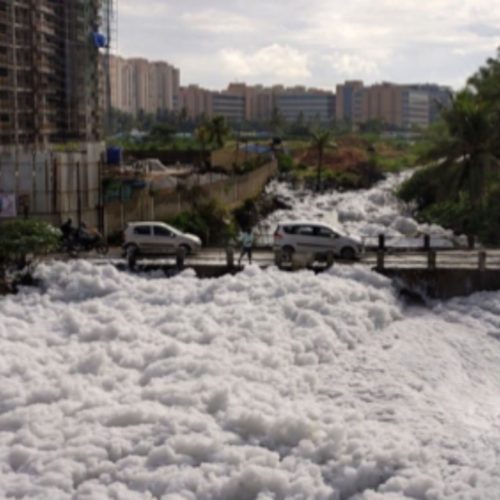What’s Killing Our Lakes & Rivers? This IISc Professor Reveals The Answer
"The inflow of pollutants has far surpassed the assimilative capacity of our water bodies. Any more dilly-dallying now will cost us our natural resources forever," says Prof Ramachandra.

Detergent waste chokes Yamuna at the mouth, excess phosphate behind deadly froth!
Worried about water bodies frothing up like Bellandur Lake? Check your detergent
Alarming levels of hormone-damaging chemical found in Ganga and Hindon, says study
Such headlines are commonplace now. And the sadder part is, they have become so common that we hardly pay attention to the grave ecological threat we are facing.
The Better India (TBI) got in touch with Dr T V Ramachandra, Co-ordinator of Energy & Wetlands Research Group at Centre For Ecological Sciences, Indian Institute Of Science, Bengaluru.
We spoke to him about the possible causes that majorly contribute to the destruction of our rivers and lakes, and what can be done to help the situation.

Of the many factors that contribute to the death of our water bodies is the sewage that flows into them consists of many dissolved organic compounds both natural and synthetic, such as soaps and detergents.
“These are surface-active agents or surfactants that reduce the surface tension of water, allowing air bubbles to persist at the water’s surface. These detergents essentially consist of phosphates, and a portion of which is up-taken by aquatic plants while the balance gets trapped in the sediments,” explains Ramachandra.
The synthetic surfactants are widely used in household cleaning products such as detergents, soaps, cosmetics, and personal care products such as shampoo. However, the most destructive are the common detergents that contain branch-chained alkyl benzene sulfonate surfactants, which are non-biodegradable and result in extremely persistent foam accumulating below the fall levels in the lake.
A majority of brands add Phosphate (P) to detergents and soaps to reduce water hardness which helps increase the effectiveness of the cleaners. When these cleaners drain out of our houses into lakes then phosphate leads to the overgrowth of algae, cyano-bacterial blooms and macrophytes (aquatic plants) which ultimately has a negative effect on aquatic biodiversity.
Also, the unmonitored dumping of solid household waste in the lakes has further aggravated this menace.
“It has been happening for over a decade now. The inflow of pollutants has far surpassed the assimilative capacity of our water bodies. Any more dilly-dallying now will cause us our natural resources forever,” he adds.
He says there are some solutions that we can collectively resort to for a sound ecosystem:
1) Decentralised treatment of municipality waste water preferably at ward levels
2) Apply ‘polluter pays’ in true spirit – restricting the entry of untreated sewage and industrial effluents into lakes.
3) Let only treated sewage through constructed wetlands and shallow algae pond into the lake.
4) Regular maintenance of floating macrophytes.
5) Avoid dumping of solid wastes into lakes.
6) Make local residents environmentally literate.
7) Most importantly, enforce restrictions or bans on detergents using phosphorous (which is a limited, non-renewable resource).
It’s time to take some action at the micro level. Start by switching your washing detergents with the sustainable one’s in the market. Whilst most states in the US, Canada and countries across Europe have banned the use of phosphate in detergents, we continue to use them without so much as a second thought.
If we don’t take the step to ban them now, then when?
Also Read: The Better India Launches India’s First Subscription Kits of Range of Non-Toxic, Home Cleaners
Picture Credit: Research Study / Prof’s Image
(Edited by Saiqua Sultan)
Like this story? Or have something to share? Write to us: [email protected], or connect with us on Facebook and Twitter.
This story made me
- 97
- 121
- 89
- 167
Tell Us More
We bring stories straight from the heart of India, to inspire millions and create a wave of impact. Our positive movement is growing bigger everyday, and we would love for you to join it.
Please contribute whatever you can, every little penny helps our team in bringing you more stories that support dreams and spread hope.




















